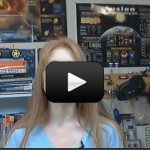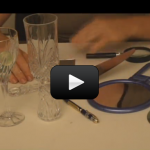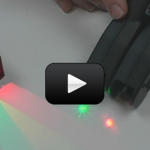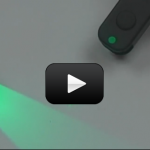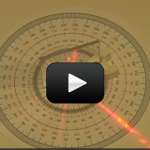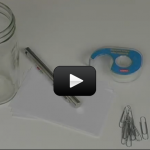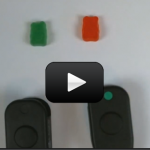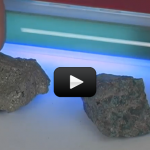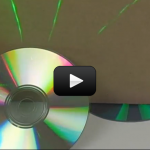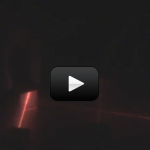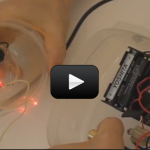Lasers are super-cool gadgets that focus the light energy into a narrow beam you can tease cats and small kids with. Lasers first made their appearance in the 1960s, but had been thought about since the early 1900s by Einstein. We’re going to learn how to split, shatter, mix, bounce, gyrate, and spray laser light beams across our homemade lab bench. Are you ready?
The word "LASER" stands for Light Amplification by Stimulated Emission of Radiation. A laser is an optical light source that emits a concentrated beam of photons. Lasers are usually monochromatic – the light that shoots out is usually one wavelength and color, and is in a narrow beam. By contrast, light from a regular incandescent light bulb covers the entire spectrum as well as scatters all over the room. (Which is good, because could you light up a room with a narrow beam of light?).
Soon you'll be building shattering light rays, firing music on a laser beam, and building your own laser light show from tupperware. Let's get started by learning about lasers with this video:
The word "LASER" stands for Light Amplification by Stimulated Emission of Radiation. A laser is an optical light source that emits a concentrated beam of photons. Lasers are usually monochromatic – the light that shoots out is usually one wavelength and color, and is in a narrow beam. By contrast, light from a regular incandescent light bulb covers the entire spectrum as well as scatters all over the room. (Which is good, because could you light up a room with a narrow beam of light?).
Soon you'll be building shattering light rays, firing music on a laser beam, and building your own laser light show from tupperware. Let's get started by learning about lasers with this video:
ou can get started by watching this video, and afterward either read more about it or start your experiments!
Scientific Concepts:
- LASER stands for Light Amplification by Stimulated Emission of Radiation.
- Most lasers are monochromatic (one color).
- Filters can be used to block certain wavelengths.
- Razor-edge slits create interference patterns.
- Laser beams are illuminated by small particles.
- Lenses have the same effect on lasers as on light beams.
- Lasers are concentrated beams of light.
- When a laser is aimed at a window, part of the beam passes through while the rest is reflected back.
- Aiming a laser on a spinning mirror changes the position of the laser beam reflection.

